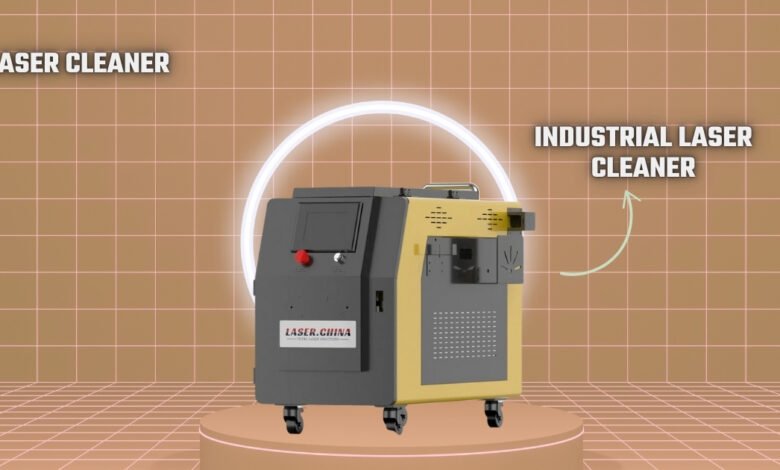What is a metal laser cutting machine and how does it contribute to modern manufacturing
laser cutting machine

A metal laser cutting machine is an advanced tool that uses a highly focused laser beam to cut through metal materials with high precision and speed. It operates by directing a powerful laser beam onto the metal’s surface, which melts, vaporizes, or blows away the material, leaving behind a clean, smooth cut. Metal laser cutting has revolutionized the manufacturing industry by offering greater flexibility, accuracy, and efficiency compared to traditional cutting methods such as mechanical cutting, plasma cutting, or waterjet cutting. In this answer, we will explore how a metal laser cutting machine works, its advantages, and its role in modern manufacturing.
1. How Metal Laser Cutting Machines Work
Metal laser cutting machines use a high-powered laser beam, typically generated by either a CO2 laser or a fiber laser, to cut through metal. The process begins when the laser light is generated and directed toward a focusing lens, which concentrates the light into a fine, high-energy beam. The laser beam is then focused on the metal surface by a cutting head. The heat from the laser melts or vaporizes the metal, and compressed air, nitrogen, or oxygen is often used to blow away the molten material, preventing the cut from becoming obstructed.
There are several methods through which laser cutters achieve the cutting action:
- Fusion Cutting: This method involves melting the metal at the cutting line with the laser beam. The molten metal is removed by a stream of gas.
- Flame Cutting: Here, oxygen is used with the laser to create a chemical reaction that cuts through the metal. This method is used for materials that have a high melting point.
- Sublimation Cutting: In this method, the laser beam focuses intense heat on the metal, causing it to sublimate (turn directly from solid to gas), which is commonly used for thinner materials.
The efficiency and versatility of laser cutting make it suitable for a wide range of metals, from steel and aluminum to more specialized materials like brass, copper, and titanium.
2. Advantages of Metal Laser Cutting Machines
- Precision and Accuracy:
Metal laser cutting machines are capable of achieving high levels of precision, often down to fractions of a millimeter. This allows for the production of parts with intricate details and complex geometries that would be difficult or impossible to achieve with other cutting methods. The focused laser beam provides a high level of control, minimizing deviations and ensuring uniformity throughout the cut. - Minimal Heat Affected Zone (HAZ):
The laser cutting process generates a relatively small heat-affected zone (HAZ), which means there is less thermal distortion in the material. This results in cleaner edges, less warping, and reduced need for post-processing. Additionally, the small HAZ makes laser cutting ideal for cutting thin metals without causing damage to the material’s integrity. - Speed and Efficiency:
Metal laser cutting machines are incredibly fast, especially when cutting thin to medium thickness metals. This rapid cutting speed helps reduce production time and increase throughput in industrial environments. The ability to quickly change cutting parameters digitally also allows manufacturers to adapt to different designs without needing to retool, further enhancing efficiency. - Flexibility and Versatility:
Laser cutting machines are versatile, able to cut through various types of metals, including ferrous and non-ferrous metals. Additionally, they can handle a wide range of thicknesses, from thin sheets to thicker plates, making them useful in diverse applications. Laser cutters are also highly effective in engraving, marking, and etching metal surfaces with intricate designs or logos. - Reduced Material Waste:
Laser cutting produces minimal material waste due to the precision of the cut. The small kerf (width of the cut) and high accuracy help maximize material usage, which is a significant advantage in industries where material costs are high. The reduced waste also contributes to lower operational costs and a more sustainable manufacturing process. - Automation and Integration with CAD/CAM Systems:
Modern metal laser cutting machines are often integrated with computer-aided design (CAD) and computer-aided manufacturing (CAM) software, allowing for automated cutting of parts based on digital designs. This level of automation reduces human error and increases productivity by enabling high-volume production with minimal manual intervention.
3. Applications of Metal Laser Cutting Machines
Metal laser cutting machines are used in a wide variety of industries due to their flexibility and precision. Some of the common applications include:
- Automotive Industry:
Laser cutting is commonly used to create precise metal components for the automotive industry, including parts for the body, chassis, exhaust systems, and engine components. The precision and ability to cut complex shapes make laser cutting ideal for mass production and prototyping. - Aerospace Industry:
In aerospace, where safety and precision are paramount, laser cutting machines are used to fabricate high-performance components such as turbine blades, airframe parts, and other critical elements that require tight tolerances and minimal defects. - Sheet Metal Fabrication:
Metal laser cutting machines are widely used in sheet metal fabrication to create parts for a variety of applications, including HVAC systems, electrical enclosures, machinery, and custom metal products. Their ability to produce clean, accurate cuts makes them ideal for sheet metal industries. - Electronics and Electrical Industry:
Laser cutting is used in the electronics industry to cut and engrave metal components, such as circuit boards, connectors, and housings, with high precision. The capability to cut small, intricate parts makes laser cutters invaluable for this sector. - Art and Design:
Metal laser cutting machines are also employed in the creation of metal art, decorative items, signage, and jewelry. The precision offered by laser cutting allows for highly detailed and personalized designs, making it ideal for custom work.
4. Limitations of Metal Laser Cutting Machines
Despite their many advantages, there are some limitations to consider. Laser cutting machines can be expensive to purchase and maintain, particularly high-end models that offer advanced features. Additionally, while laser cutting is effective for many metals, it may struggle with reflective materials such as copper and brass, requiring specialized equipment to handle these materials. For cutting very thick metals, other methods like plasma or waterjet cutting may be more efficient.
In conclusion, metal laser cutting machines are a cornerstone of modern manufacturing, offering exceptional precision, speed, and versatility. They provide significant advantages in various industries, enabling manufacturers to produce high-quality parts and products with minimal waste and reduced processing time. As technology advances, the applications of metal laser cutting machines are expected to expand, further revolutionizing how metal fabrication is performed in industries worldwide.


